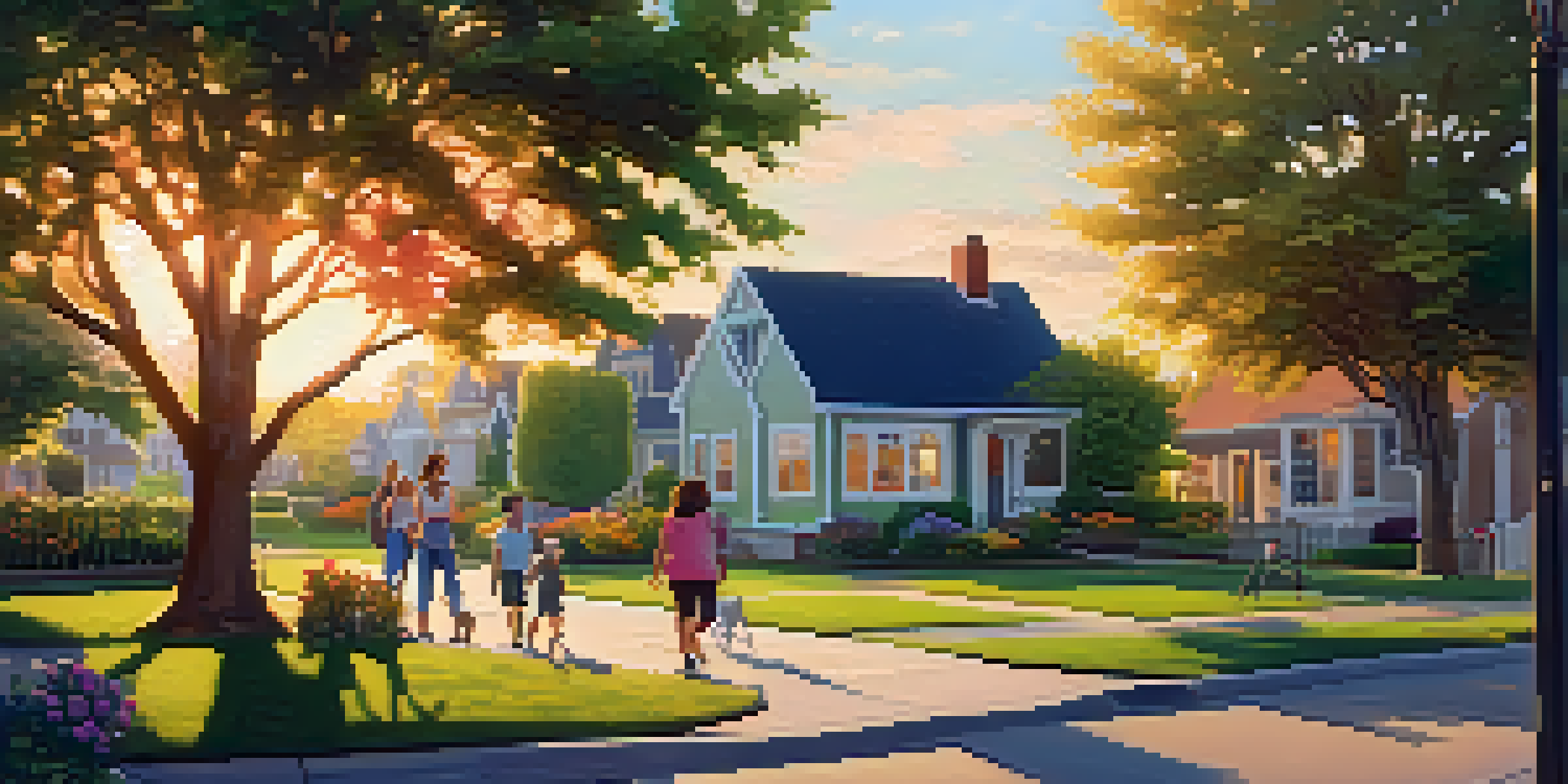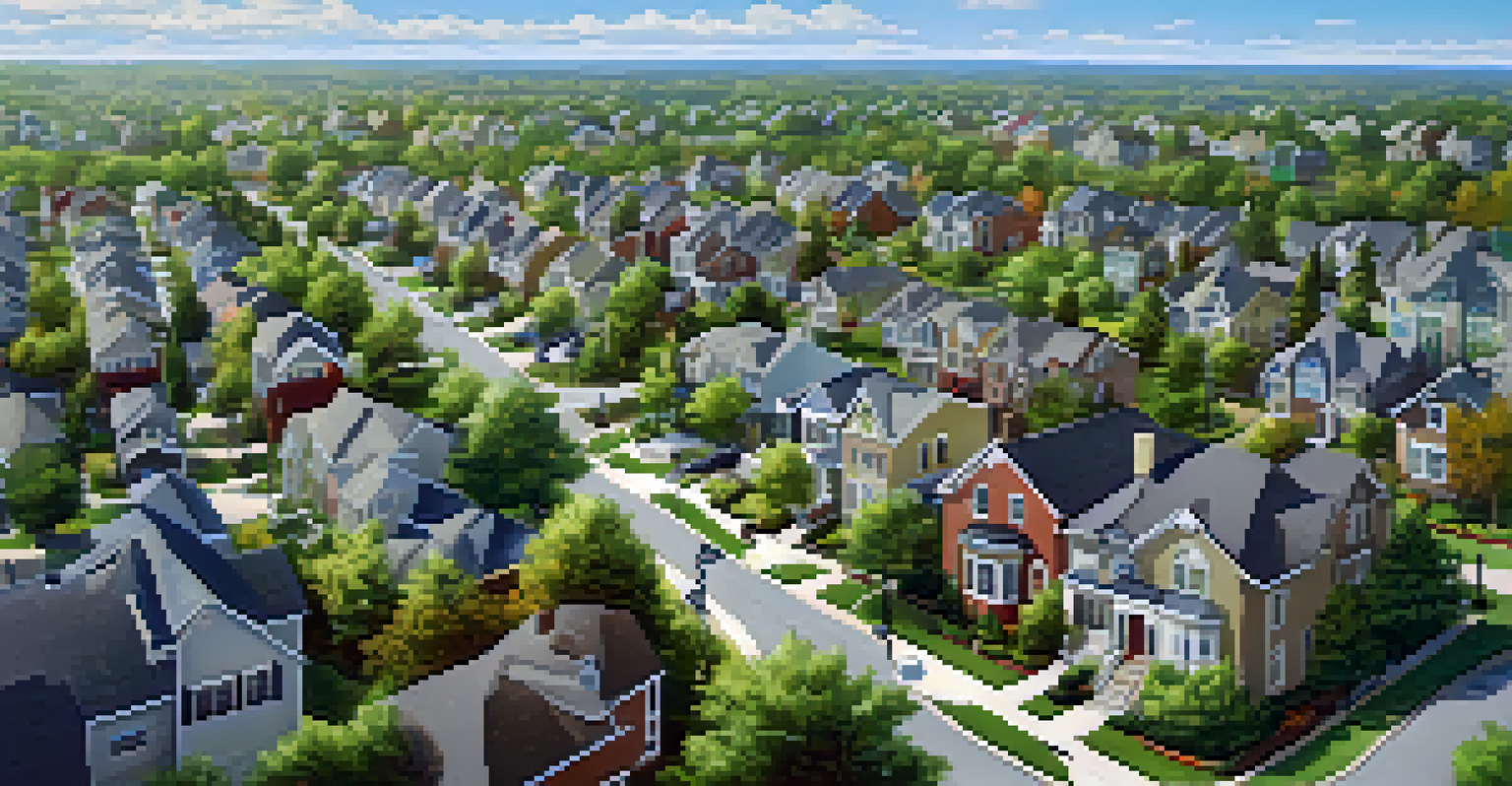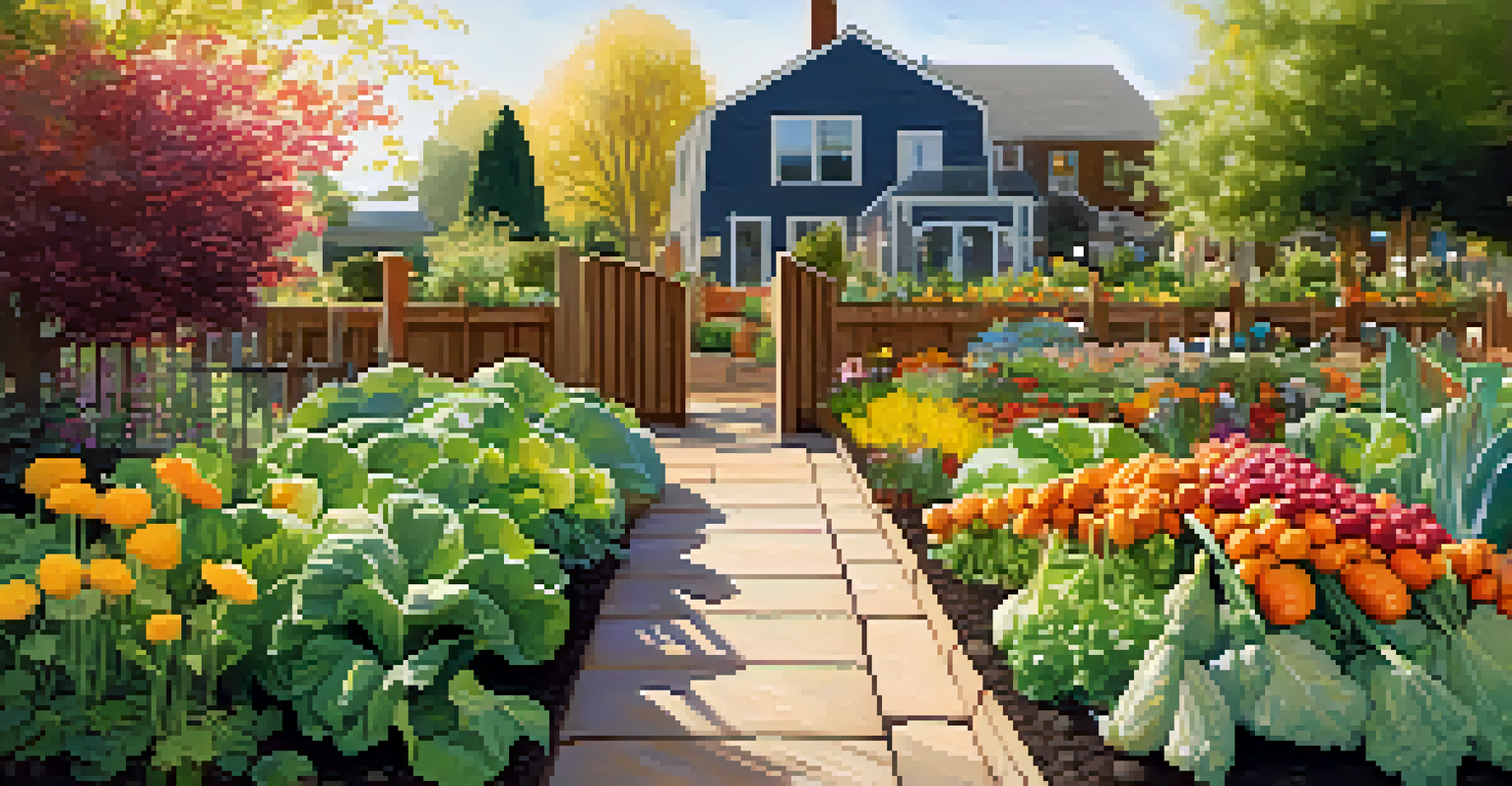Environmental Implications of NYC to Suburban Migration

Understanding NYC to Suburban Migration Trends
In recent years, many New Yorkers have chosen to leave the hustle and bustle of the city for the more serene suburban life. This trend, often driven by the search for more space and a quieter lifestyle, has significantly altered demographic patterns. As cities face challenges like high rent and crowded living conditions, suburbs are becoming an attractive alternative for families and individuals alike.
The future will be green, or not at all.
This migration isn’t just about personal preferences; it’s also influenced by factors such as remote work flexibility and the desire for a healthier environment. For many, the appeal of larger homes with yards and access to nature is hard to resist. However, this shift raises important questions about the broader environmental implications of such a mass exodus.
As people flock to the suburbs, the impact on local ecosystems, infrastructure, and resource consumption becomes a crucial topic worth exploring. Understanding these implications can help us navigate the challenges and benefits of urban to suburban migration.
Impact on Urban Infrastructure and Resources
The migration from NYC to the suburbs significantly affects urban infrastructure. With fewer people in the city, public transport systems may experience reduced ridership, leading to budget cuts and decreased service. This could further encourage a reliance on personal vehicles, contributing to increased traffic congestion and pollution in suburban areas.

Conversely, suburban areas may struggle to accommodate the sudden influx of new residents. Infrastructure like roads, schools, and healthcare facilities can face strain, resulting in longer commutes and overburdened services. As suburbs expand to meet the demand, the environmental impacts of urban sprawl become increasingly evident.
Suburban Migration Alters Demographics
The shift from NYC to suburbs is reshaping population dynamics, driven by the desire for space, remote work, and a healthier lifestyle.
Essentially, this shift creates a ripple effect, where both urban and suburban areas must adapt to changing population dynamics. It's crucial for planners and policymakers to consider sustainable solutions that can benefit both regions.
Effects on Green Spaces and Biodiversity
Suburban migration often leads to expanded development, which can encroach upon green spaces and natural habitats. As new homes and businesses are built, local ecosystems may be disrupted, threatening the biodiversity that exists in these areas. For example, the construction of housing developments can lead to habitat loss for native species, reducing their populations.
Sustainability is no longer about doing less harm. It’s about doing more good.
Moreover, the increase in population density in suburban areas can place additional pressure on existing parks and recreational spaces. As more people seek outdoor activities, these areas can become overused, which may lead to degradation of the environment. It's a delicate balance between accommodating new residents and preserving the natural beauty of these regions.
Promoting responsible land use and conservation efforts is essential to mitigate these impacts. Initiatives aimed at protecting existing green spaces and restoring habitats can help maintain biodiversity in the face of suburban expansion.
Increased Carbon Footprint from Suburban Lifestyles
Moving to the suburbs can inadvertently increase an individual’s carbon footprint. Suburban living often entails longer commutes to work, leading to higher vehicle emissions. With many people relying on personal cars instead of public transport, the environmental costs can add up quickly.
Additionally, larger homes in suburban areas typically require more energy for heating and cooling, contributing to increased greenhouse gas emissions. Each suburban household may consume more resources due to the size and nature of their living arrangements compared to more compact urban dwellings.
Environmental Impact of Sprawl
Urban to suburban migration raises concerns about infrastructure strain, increased carbon footprints, and the loss of green spaces.
Addressing these concerns requires innovative urban planning and a focus on sustainable development practices. Encouraging public transport use and promoting energy-efficient homes can help counterbalance the potential increase in carbon emissions.
Water Management Challenges in Suburban Growth
As suburbs expand, water management becomes a significant challenge. Increased development often leads to greater impervious surfaces, like roads and parking lots, which can result in more stormwater runoff. This runoff can carry pollutants into local water bodies, degrading water quality and harming aquatic ecosystems.
Moreover, the demand for water in growing suburban populations can strain local water supplies. As more households tap into these resources, the risk of over-extraction increases, potentially leading to water shortages and conflicts over water use.
Sustainable water management strategies, such as rainwater harvesting and permeable pavement, can help mitigate these issues. By implementing green infrastructure solutions, suburbs can better manage water resources while protecting local ecosystems.
Social Equity and Environmental Justice Concerns
The migration from NYC to the suburbs brings forth social equity and environmental justice issues. Often, new suburban developments can lead to gentrification, displacing long-time residents and altering community dynamics. This can exacerbate existing inequalities, making it essential to consider the social implications of migration patterns.
Additionally, the environmental benefits of suburban living may not be equally accessible to all residents. Low-income communities may lack access to green spaces or suffer from poorer air quality due to industrial developments. Ensuring that all community members can enjoy a healthy environment is a crucial aspect of sustainable development.
Need for Sustainable Development
Future suburban growth should emphasize sustainable practices to balance community expansion with environmental preservation.
Addressing these disparities requires inclusive planning processes that consider the needs of all residents. Engaging communities in decision-making can lead to more equitable solutions that benefit everyone.
Future Outlook: Sustainable Suburban Development
Looking ahead, the focus should be on sustainable suburban development that balances growth with environmental stewardship. Planners and developers can work together to create communities that prioritize green spaces, efficient transportation, and renewable energy sources. This approach not only benefits the environment but also enhances the quality of life for residents.
Incorporating principles of sustainable design, such as mixed-use developments and walkable neighborhoods, can reduce reliance on cars and promote healthier lifestyles. By fostering a sense of community and connection to nature, suburbs can become more resilient to the challenges posed by rapid population growth.

Ultimately, the goal is to create suburban environments that are not just livable, but also sustainable. Through thoughtful planning and community engagement, it is possible to build a future where both people and the planet thrive.